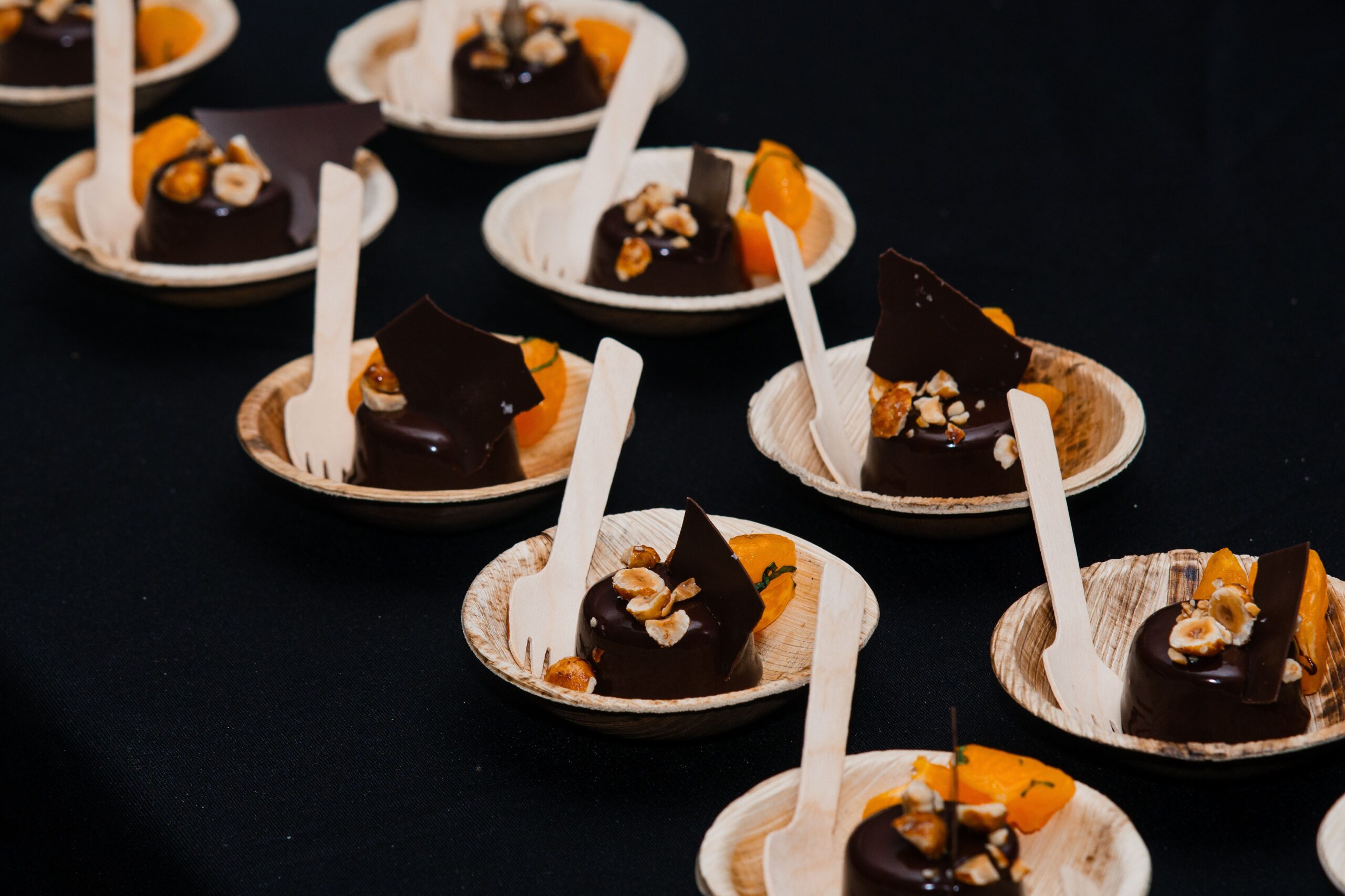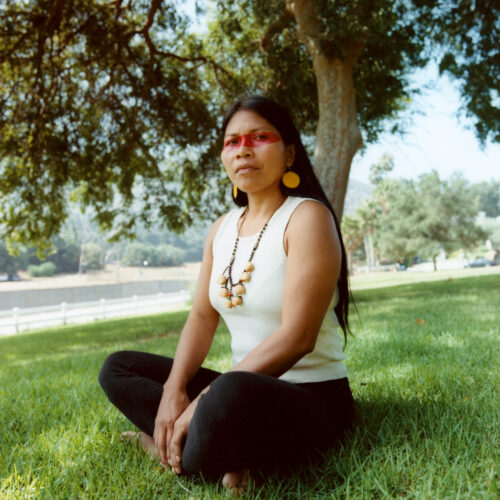Over the years, various Texan cities have taken the national spotlight as fast-growing immigration hubs, oftentimes leaving San Antonio forgotten. However, when you look closely, you notice San Antonio offers culture, wine and food like no other, which LATINA got a taste of at the Day of the Dead (Día de los Muertos) pop-up market at the Tasting Texas Wine + Food Festival.
When you arrive in San Antonio, you can only sense vitality. Their famous riverwalk was alive on the Day of the Dead as floats ambled down the river. An orchestra played its swelling strings, families brought chairs to see the parade and children with painted faces were overjoyed to see skeletons and luchadors dancing to cumbia. But it wasn’t solely a Mexican affair. As you looked beyond the walkway lined with chairs, people from all walks of life danced on bridges and from their balconies.
Every weekend, it feels as if San Antonio shapeshifts, recreating itself for another festival. Unexpectedly, San Antonio has the largest Diwali festival in the nation, resulting in streets glowing from candlelights everywhere. Other San Antonio-based events include a drunken ice cream festival and the Battle of Flowers Parade, where students get the day off to witness the spectacle, which includes marching bands, women adorned in crowns and silk dresses and the procession of a boundless Texan flag.
For the Day of the Dead pop-up market, which took place during the last weekend of October, people walked through the revelry with an ambiguous mixture of solemnity and celebration. The park was quickly transformed, lined with stands covered in skulls and papel picado serving ribs, funnel cakes, burgers and tacos; a quintessentially American carnival with an undeniable Mexican influence. Further in the park, following the noise of a jam band, was a massive net with countless kids hanging and playing. Everywhere your gaze turned there was an overwhelming proliferation of life. San Antonio is constantly dubbed non-walkable, where one would assume their wide highways disrupt its connectivity. Yet, at its center, there’s an undeniable warmth.
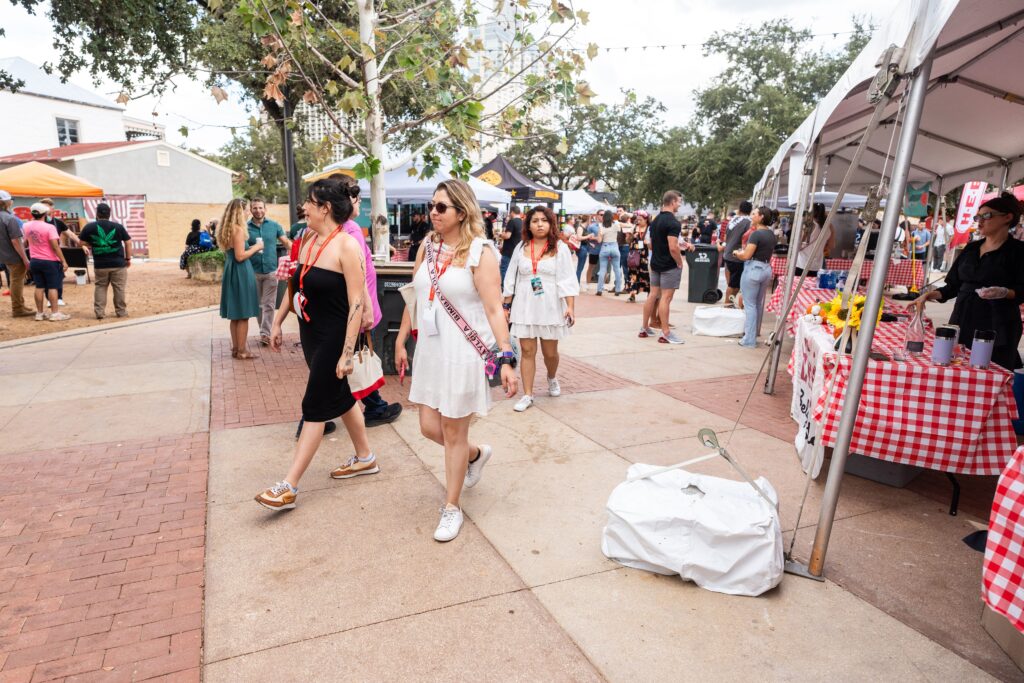
Photo by Joshua Muñoz.
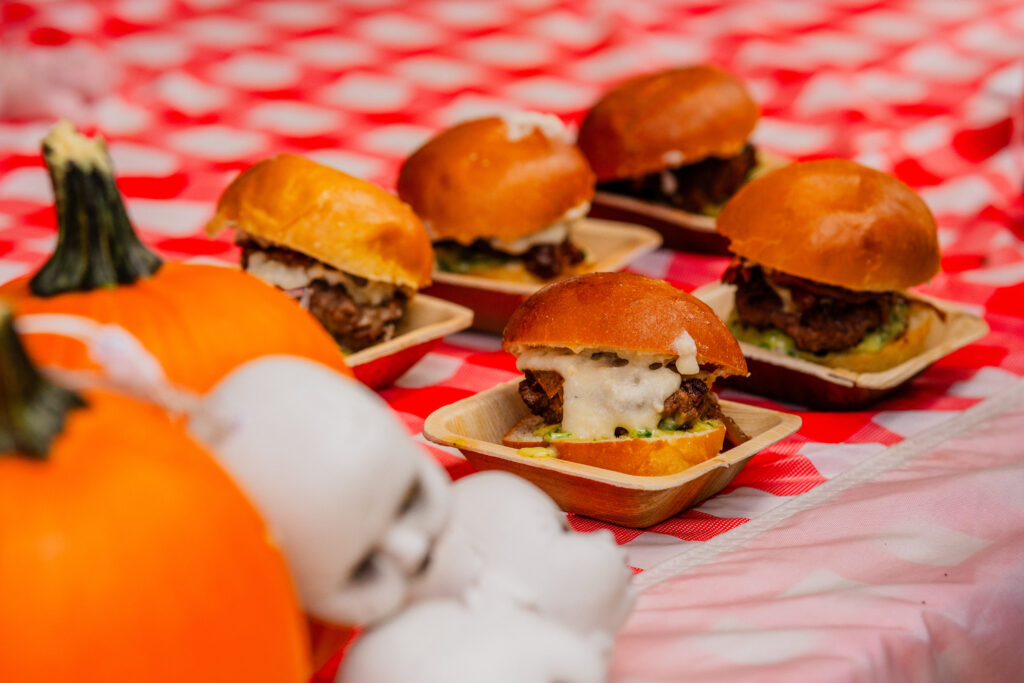
Photo by Joshua Muñoz.
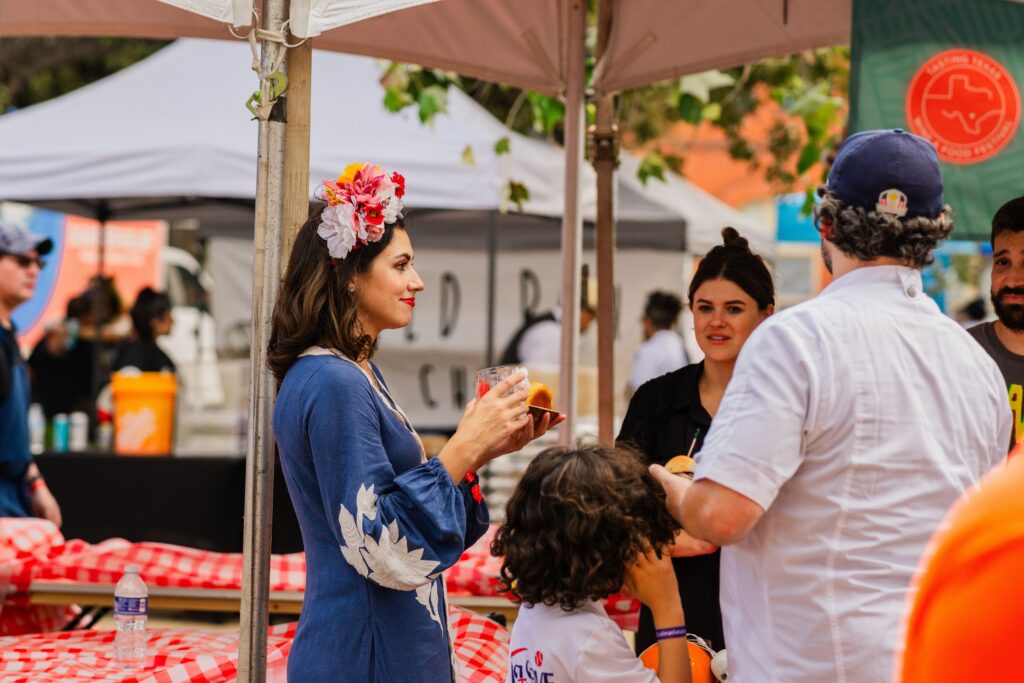
Photo by Joshua Muñoz.
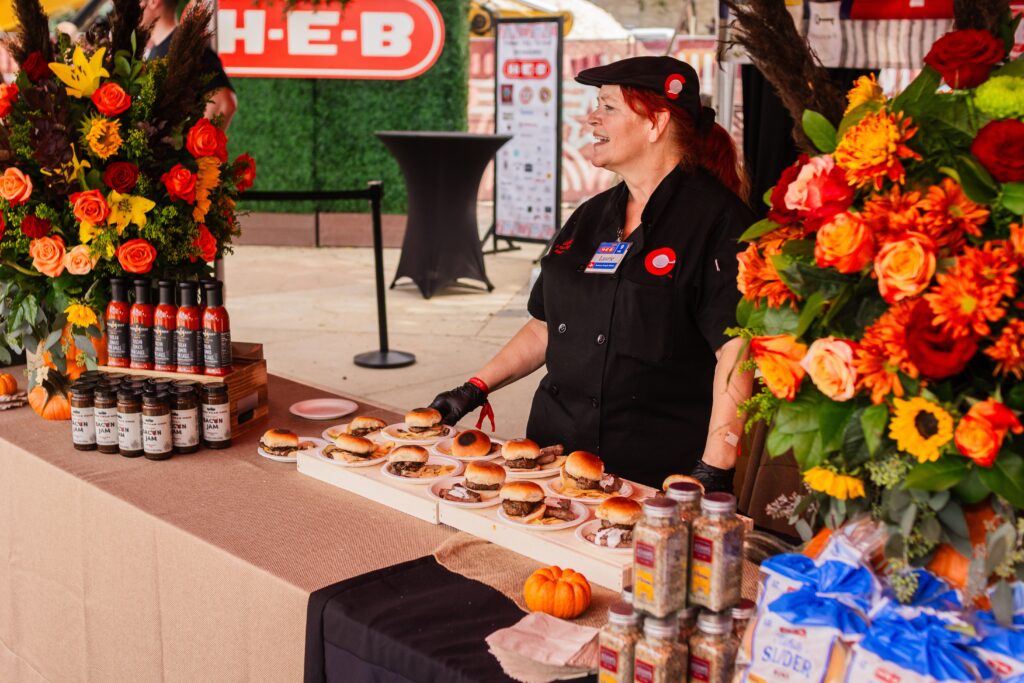
Photo by Joshua Muñoz.
San Antonio is undergoing a conscious transformation — a revitalization. Developments abound, most notably the Pearl — a shopping district built around a defunct and rustic brewery. Lined with restaurants and peppered with greenspace, it has served as a model for the future of San Antonio. The view forward for San Antonio is an embrace of its past. La Villita, located on the southern bank of the riverwalk, is currently trying to follow in the footsteps of the Pearl, transforming itself into another culinary destination. There, they have preserved many 19th-century homes, keeping the same foundations, caliche walls, fragrant wooden floors and cobblestone pathways.
At La Villita — the inaugural of San Antonio’s culinary explosion — the James Beard Foundation hosted the four-day-long Tasting Texas Wine + Food Festival earlier this fall. Considered a new festival, only in its second iteration, hundreds of star chefs from San Antonio and throughout Texas gathered to fill booths in the recently renovated Maverick Plaza. Not only were delectable bites served, but educational seminars were hosted, whether it be how to make the perfect jerk seasoning or advice on opening a successful restaurant.
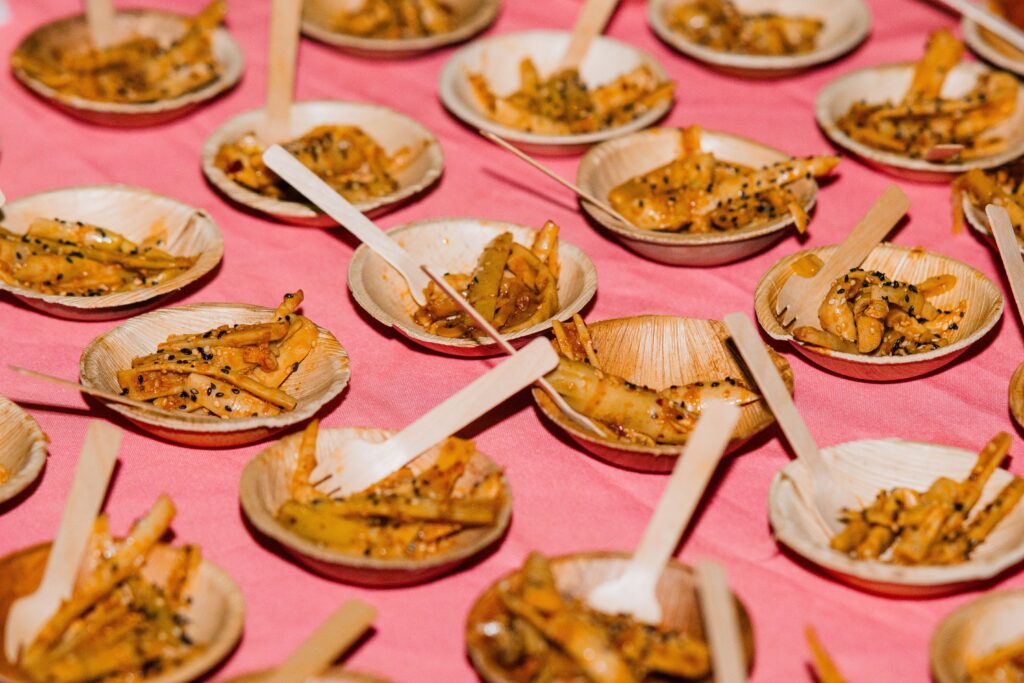
Photo by Joshua Muñoz.
Along both sides of the pathway, chefs asserted themselves, displaying unquestioned creativity; you could only be impressed by the diversity of dishes presented before you. There was quail with a complex jerk seasoning, a tostada topped with pozole and choclo, another tostada with lamb mole, teriyaki tenderloin, miso noodles with smoked salmon and a Peruvian-inspired stir fry. Each bite in the festival was the city demanding respect and finally asking to be noticed for their dedication to culinary innovation.
The chef who embodied this spirit most clearly is Stixs & Stone’s Leo Davila, who served a braised brisket tostada with nopales, a green goddess sauce and pickled red onions. He fuses techniques and cultures: smoking his barbacoa for 16 hours low-and-slow, balancing a barbecue sauce with lemongrass.
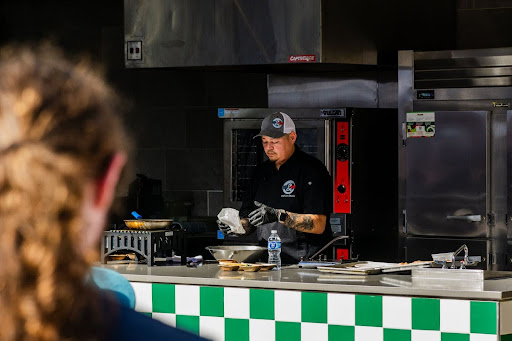
Photo by Joshua Muñoz.
Whether it be the sourcing of the perfect corn tortilla or referencing his grandfather’s pecan tree, Davila approached food with the same overwhelming level of excitement. He does not fear being called inauthentic for inflecting his Mexican dishes with Asian flavors. Instead, he views this expression as authentic to himself, an act of sincerity. He understands the motivation to preserve but wants to innovate honestly, claiming that his inventions come straight from his heart and San Antonio. After all, his iconic dish is a taco with Big Red — a San Antonio soda — in his masa to add a popping contrast and sweetness to pair with his tender barbacoa.
Kris Moon, the president and COO of the James Beard Foundation, recounted his shock with the culinary brilliance of San Antonio, cheekily dubbing it the next Charleston — a populous yet undiscovered gem in the middle of Texas. He stressed its lack of pomp: San Antonio challenges the “white tablecloth” vision of luxurious dining, not stuffy but inviting and inventive.
This spirit of playfulness in these culinary experiments and unexpected inversions is seen at Clementine — a family-owned restaurant. Some dishes include a stunning beet salad with nibbles of cocoa, a classic Italian Cavatelli with broccoli and pesto with a subtle hit of mala from their Sichuan peppercorns. What is once familiar becomes new; in this surprise, you are struck with wonder.
These acts of fusion seem endemic to San Antonio, irreducible to the city’s complex immigration and settlement history, where in the mid-19th century, signs had three languages: Spanish, English and German. Each chef I spoke to wants to shock and create, to progress through embracing these nearly Hegelian culinary-cultural tensions. Each chef brought a part of themselves to this equally bewildering city — seen in Kristina Zhao’s adaptation of Sichuan cuisine. Understanding the undeniably Mexican roots of San Antonio, with its roadside asados and al pastor on spits throughout the city, Zhao served carnitas in steamed buns and characterized her fuqi feipian as a “Sichuan menudo,” both using tripe and chilis.
On the last day, the courtyard was refashioned into a pseudo-competition, each stand vying to make the best slider. Wherever you looked, there was novelty and passion, a will to be unforgettable. All juicy and rich, with each chef painstakingly finding the optimal variations of cheese and sauce, one stood out: Phat Eatery’s pulled-pork slider with a turmeric-forward curry, a grounded riff on barbecue, which was simultaneously sweet and earthy.
We came for a taste of Texas; we want to return for a feast.
Dates for the 2024 Texas Wine + Food Festival have not been announced.
Narciso Novogratz is a freelance writer currently living in New York.
